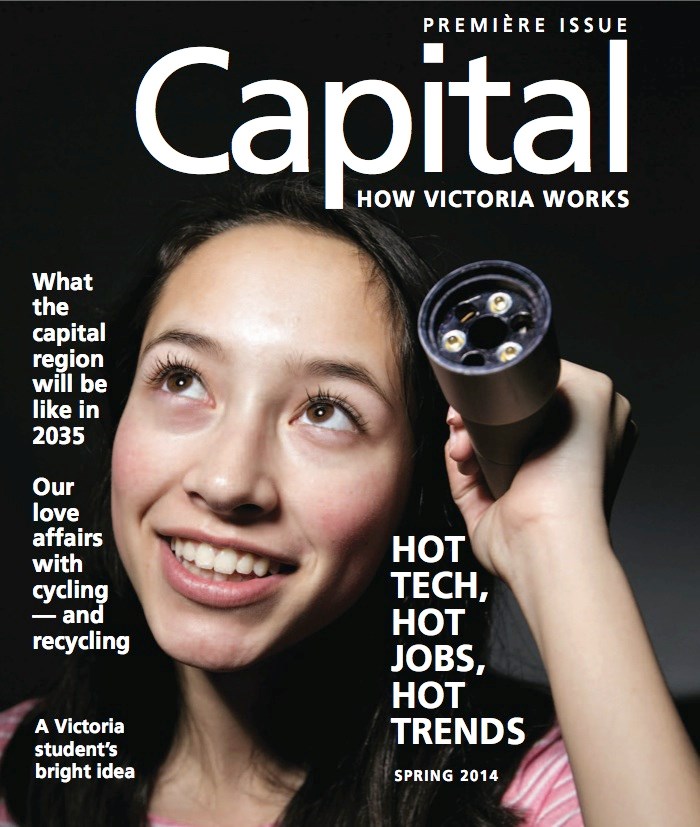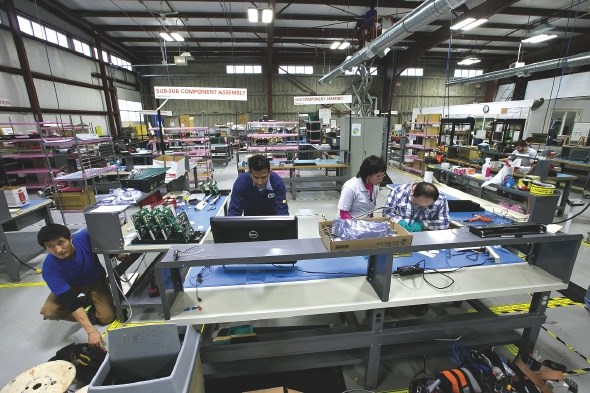It has been almost 10 years since technology eclipsed tourism as this region’s top private industry.
But there are still some people wondering just how that happened.
The $1-billion tourism industry made sense — a beautiful location in a mild climate with plenty of outdoor activities and creature comforts to appeal to all kinds of travellers.
But why Victoria now boasts a $3-billion high-tech industry is a little more vexing.
 |
|
Click on the cover to |
“It’s a good question. … If you looked at it from the 10,000-foot level, you would question what it is about here,” says Bill Collins, an industry veteran and chief operating officer of Quester Tangent, which has been part of the tech sector for 30 years.
Collins says technology sectors tend to grow up around bigger centres, and largely “from being adjacent to folks with a need, because necessity is the mother of invention.”
And Victoria is, of course, on an Island.
“This is not a traditional kind of tech place that evolved,” says Collins. “I think it’s more to do with the kind of people that end up here.”
And Victoria appears to have plenty of the right kind of people.
According to Dan Gunn, executive director of the Victoria Advanced Technology Council, they were drawn here by two universities and a college and 10 federal research labs.
“That draws people who are naturally innovative and interested in learning. The other thing about Victoria is, unlike other cities, people often move here for the lifestyle first and then find a way to make a living here,” he says. “That means they are values-driven and find themselves being an entrepreneur. They are willing to make a move and take a risk without the next door being opened. They will do what they have to do to make it work.”
Collins agrees, noting that kind of person tends to be smarter and filled with confidence. “You have a collection of people who are very smart, quite highly innovative and risk takers.”
But a lot of smart people on an Island does not necessarily translate into a high-tech hub, and certainly doesn’t explain the fact the industry has tripled its economic impact to more than $3 billion within the last 10 years.
Gunn believes there was a perfect storm of factors. “In the late 1990s and early 2000s the barriers to entry came down so much because of the Internet and as a result being on an Island was no longer that big a deal.”
With companies no longer needing to be anywhere in particular, they opt for a place that provides a lifestyle that would balance off hard work.
It worked.
There are now more than 900 technology companies on southern Vancouver Island employing 15,000 people directly, though it’s estimated there are more than 20,000 who hold what would be considered tech jobs. There have even been sub-sectors of the industry established, such as the electronic game-design sector, which has grown to 18 local studios employing about 240 people.
Scott Phillips, chief executive officer of Starfish Medical, says high-tech’s growth was also fuelled from within as early successful companies like AXYS spun out small firms and re-invested in other start-ups. “People had seen enough entrepreneurs be successful here and they got the idea to start their own companies and others that had been successful were willing to invest,” he says. It helped that the city remained quite small and the tech community remained tight knit.
That internal investment continues with the executives behind success stories such as ParetoLogic and Aspreva continually investing in and mentoring new firms. “There is a magical size. If you’re too small, there’s not enough going on, and if you’re too big, people fragment. At this stage everyone wants the whole industry to be successful,” Phillips says. That means senior entrepreneurs are happy to help bankroll and guide new ventures.
The hurdles facing further expansion of the industry revolve around talent. “We are working hardest on letting people know there is a tech sector here and there are opportunities for them,” Gunn says. “We are starting to get to be known locally and within B.C., but we need the other areas like Seattle and San Francisco to start to recognize it.”
Gunn said Victoria can certainly compete with both on the cost-of-living issue, and if the industry can hold onto the talent graduating from UVic, Royal Roads and Camosun, there’s no reason it couldn’t be a $4-billion industry in five years.
Collins said the lure of the Island lifestyle works.
“It’s a tremendous challenge to recruit people, but once they’re here they tend to stay,” he says, noting most of Quester’s senior managers and directors have been with the company for 15 years or more.
